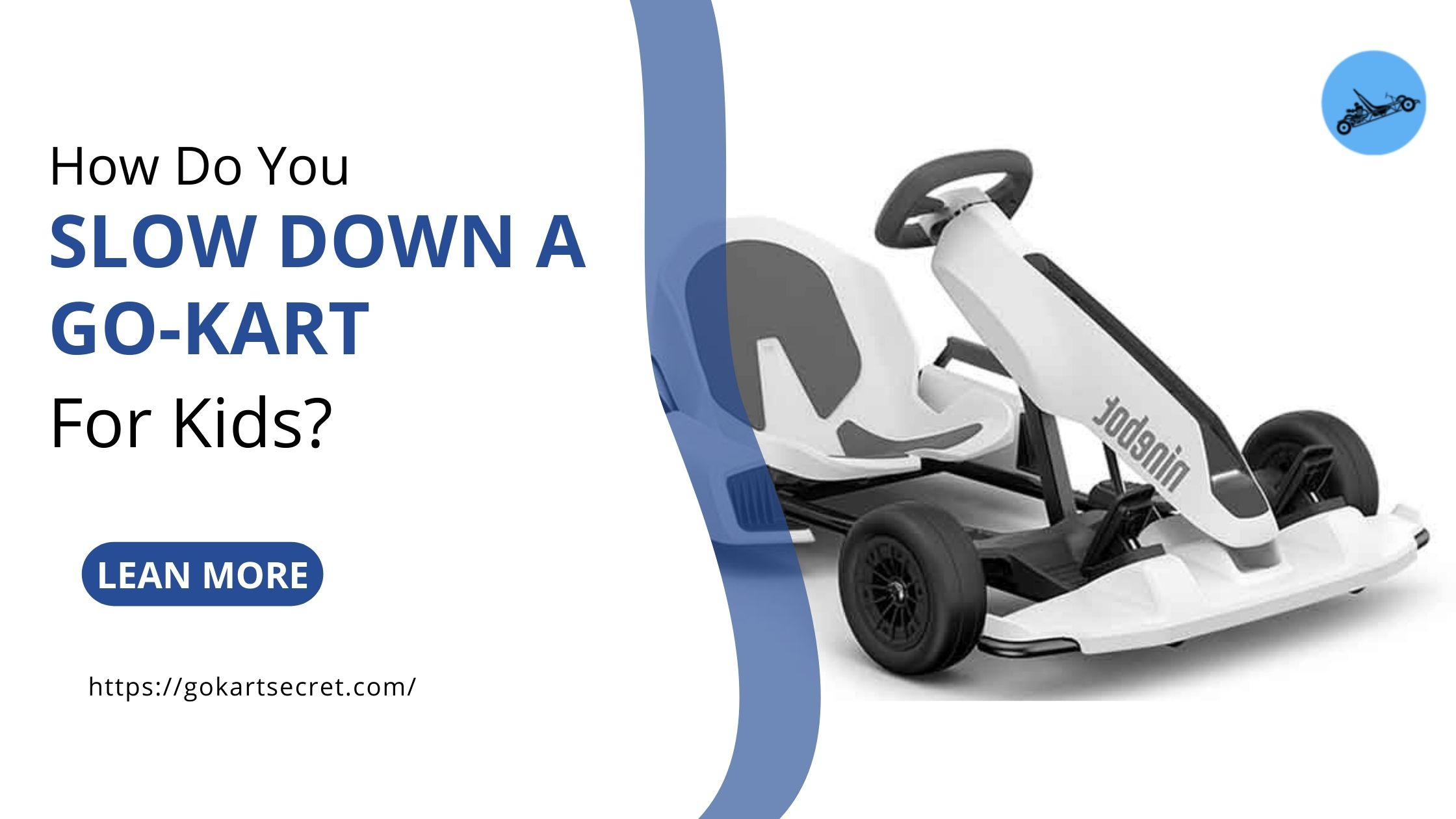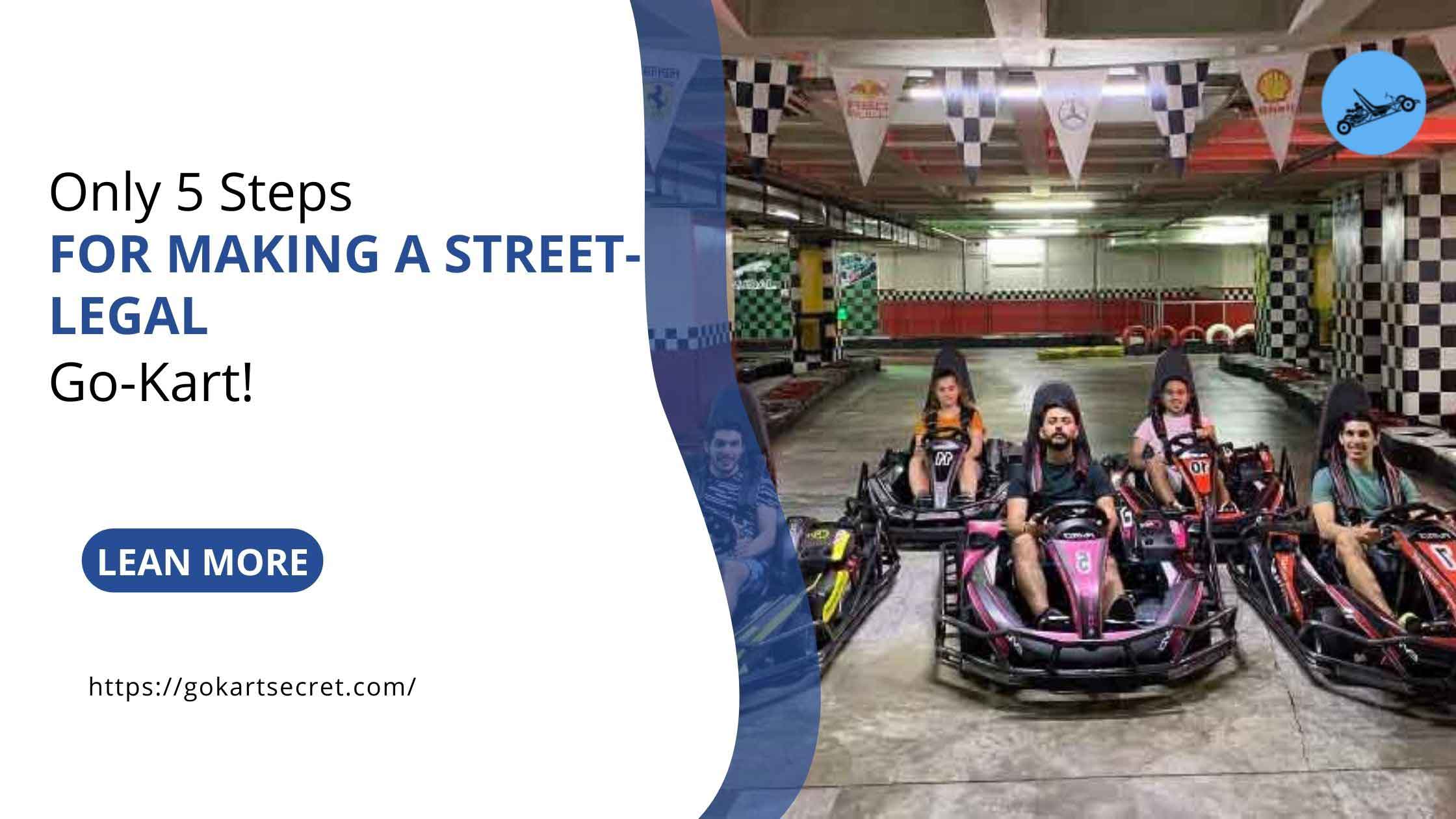A go-kart has numerous parts that assist in transferring power generated from its engine to the rear wheels and the rear axle.
One of such parts is a transmission, which is the mechanical device that’s connected to the crankshaft. In this guide, we will have a detailed glance at all of the go-kart transmission types, how they work, and which situations they are best suited for.
What Is A Go-Kart Transmission?
A go-kart transmission is actually a mechanical device that transmits the rotational force that is made by the go-kart engine to its rear axle and, ultimately, its two rear wheels, enabling the kart to speed up.
Types Of Go-Kart Transmission:
The three most common types of go-kart transmissions are automatic transmissions (torque converter and clutch), direct drives (which have no transmission), or manual transmissions (gearbox).
Here is a quick summary of every transmission type:
- Manual Transmission: Gearbox
- Automatic Transmission: Clutch and Torque Converter
- No Transmission: Direct Drive
The transmission type on the go-kart will mainly rely on the kind of go-kart and its operation.
For instance, go-kart torque converters are more usually seen on off-road and homemade go-karts, whereas clutches and manual gearboxes are usually located on racing go-karts.
Below, you will see a quick comparison between the numerous kinds of go-kart transmissions.
As you can see, all of such transmissions have diverse properties and are therefore also utilized for diverse racing classes and applications.
In the below section, we will go through each of such transmission types in more detail and also explore more technical details about them.
It’ll assist you in comprehending why they’re more common on certain kinds of go-karts.
No Transmission:
Technically speaking, not having the go-kart transmission isn’t a transmission type.
However, it’s a configuration type that is not really uncommon for electric, smaller, or homemade karts. Go-karts without the transmission are referred to as having the direct drive.
Automatic Transmissions:
The automatic type of transmission go-kart, like a torque converter or the clutch, has the capability of automatically engaging and disengaging when the crankshaft gets to a certain speed (revolutions per minute; shortened as RPM).
It also denotes that automatic transmissions permit go-karts to idle when it’s disengaged (when the revolutions per minute drop below a certain speed) and engage (when the revolutions per minute go above a certain speed).
Manual Transmissions:
These on go-karts are gearboxes that permit drivers to engage a particular gear utilizing a gear knob. It provides them free control over the section of a specific gear ratio when racing.
Shifter karts are usually equipped with a 6-speed manual gearbox that’s utilized for competitive racing in certain classes, which are more common in the US and Europe.
Direct Drive Kart:
It does not have a transmission built. The majority of homemade karts, electric karts, and smaller karts are direct drives for saving space and keeping the go-kart simple.
Frequently, the power is directly transferred from its engine to its axle through a sprocket or a roller chain. The kart does not contain a variable adjusted power transfer and has to be engaged with the rear axle. Hence it can’t stay at an idle state once its engine starts and rotational movement starts.
Brake pedals and accelerators can adjust the kart speed; the gear ratio remains the same, and the driver can’t adjust the torque of its engine revolutions per minute through the transmission.
Electric karts are direct drives as they shuttle through electric speed controllers; however, gas-powered karts frequently have manual transmissions or automatic transmissions.
The Direct drive is the cheapest to create and functions well with small electric go-karts.
They can’t stay idle, and components wear higher because of their constant rotational movement. It is typically utilized in recreational parks for junior drivers.
Go-Kart Clutch:
The clutch transmission is the non-variable, automatic transmission utilized in go-karts. The engine is powered by the rear axle using a chain drive.
It’s connected to the crankshaft and then connects the rear axle shaft from the other side, transferring the crankshaft’s rotational movement to the rear axle, hence driving the go-kart’s wheels.
The transmission is non-variable; as a consequence, the gear ratio is constant, and the rotational movement of the axle wheel and crank will be constant and can’t differ.
Working On A Clutch Transmission:
- As the crankshaft’s RPM gets to 1400-1600, it involves the clutch and makes sufficient external force for expanding the tension spring and causing the shoe or flyweight to move outwards.
- It makes the frictional material physically contact the clutch’s inner drum; once complete contact is built, the clutch is completely engaged with the shaft.
- The clutch actually spins around with its crankshaft and makes the back wheel spin through the chain; it happens at 1800 RPM.
- Working its engine at lower RPM isn’t suggested as it causes slippage between the clutches; hence, it is utilized in karts that continually accelerate at higher speeds.
Clutch Transmission Types:
- Electric Clutch: The electrically controlled transmitters offer power from the crank to its back wheel axle; these are costly to build.
- Hydraulic Clutch: The functioning of the clutch is performed through hydraulic fluid in place of mechanical parts.
- Belt Clutch: The clutch functions through belts in place of chains; the driven pulley and driving pulley are connected using belts. The belt’s wear is one of the problems of the clutch.
- Centrifugal Clutch: They’re common in karts as it is straightforward and cheap to create the clutch on the go-kart, functioning manually through chain, flyweight, and springs.
The Honda GX160 is an example of the clutch transmission engine utilized in karts.
Go Kart Torque Converter:
The Torque Converter contains the variable transmission, denoting the gear ratio changes concerning the RPM.
The Gear Ratio is actually the teeth ratio between the driven pulley and the driver pulley; at lower RPM, the gear ratio rises for adjusting the crankshaft’s rotational movement, and the gear ratio drops as the crank begins spinning at a greater rate.
The torque converter is perfect for karts with inclined surfaces or heavy loads for producing the needed power at lower RPM. These are mainly utilized in homemade go-karts and off-road go-karts.
The main part contains the pulleys, which rotate between the axle and the crank; between the pulleys are belts that transmit the rotational force from the engine to the pulley.
The converter engages completely at 1500 revolutions per minute; before the revolutions per minute, the go-kart can stay idle. One of the benefits of the torque converter is that it engages at lower revolutions per minute, and the go-kart can drive.
Working On The Torque Converter Transmission:
- The crankshaft connects its driver pulley; once the crank keeps particular revolutions per minute, the pulley clamps to the belt, causing it to rotate.
- Belts connect their driven pulley and driver pulley once the driver pulley spins; the driven pulley also rotates, changing the gear ratio.
- The back axle is connected to its driver pulley through a sprocket and chain, it offers rotary movement for the axle, and the go-kart wheels begin moving.
- Below 1500 revolutions per minute, the pulley is disengaged, the go-kart stays in the idle state, and the wear of the torque converter transmission is low.
Suzuki access 125 is the standard engine for constantly variable transmission utilized in go-karts.
Go Kart Gearbox:
The gearbox is incorporated into the engine and is most commonly a 6-speed gear transmission, it has numerous gear ratios, and the driver can pick the top gear for diverse speeds.
The maintenance ought to be done at apt intervals as the mechanical components in the gearbox require a change of lubricants.
Working On The Gearbox:
- The 6-speed manual racing go-karts have the gearbox attached to the clutch; the clutch is utilized with the gear knob for switching between the gears.
- The gears are attached to their main shaft and can actually be manually switched by the gear knob; every gear has a diverse gear ratio; at lower RPM, the first gear is suggested, and the driver can change gears as the speed increases.
- The gear is engaged with the back axle of the go-kart, and when it’s neutral, it can remain idle; while the gear is actually engaged, it rotates the axle making your go-kart move.
The Bajaj pulsar 135 engine has a gearbox incorporated to drive the kart.
Are Transmissions Needed On Go-Karts?
You do not need to have the transmission on a kart for it to function. However, the manual or automatic transmission is suggested, as you will be capable of idling and also more simply controlling the power transfer of its engine to the back axle.
If you choose to proceed without the transmission, you will have the direct drive setup, whereby the crankshaft is connected to its back axles directly through a chain and two sprockets.
Which Transmission Is Great For The Go-Kart?
While all types of transmission have the same purpose (transferring rotational force from its engine to its back axle), they attain this through diverse ways that each has advantages and disadvantages.
Go to the above section to explore more about each transmission type and what application they’re best suited for.
You might also utilize the following for reference:
- Gearbox: Shifter karts (semi-professional or professional racers)
- Clutches: Racing go-karts, high-speed karts, light loads
- Torque Converters: Off-road go-karts, low-speed go-karts, heavy loads
Which Transmission Is Most Dependable For The Karts?
All kart parts, manual and automatic transmissions, have moving components, which go through consistent wear and tear.
For instance, it is common for kart clutches to lock up because of extreme heat when slipping. Another common problem is that they can lose efficiency if the springs have been worn out over time.
The torque converter belts make consistent contact with both pulleys and can show extreme wear if not installed correctly or if operated close to the engagement range over a long period of time.
Manual gearboxes are really difficult to install and maintain as well. Gear wheels might have to be replaced now and then, as they’re always under high load.
Basically, all go-kart transmissions require some sort of maintenance and are only as dependable as the driving habits. Just make sure that whichever transmission you have chosen to install, you completely engage it.
How Do I Install A Transmission On The Go-Kart?
Both clutches and torque converters are installed on the engine’s crankshaft. However, it is significant to note that the setup between both of these transmissions is totally different.
Final Thoughts:
The go-kart transmission is very important and ought to be well-maintained for your smooth rides.
The transmission type selected relies on the particular purpose the go-kart is actually driven for; every transmission has its advantages and disadvantages, and you have to be the judge when thinking about which transmission you should install. Good luck!




